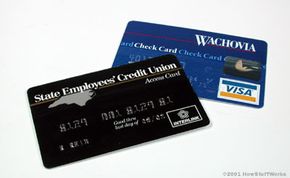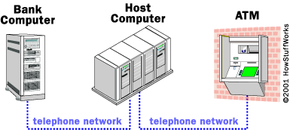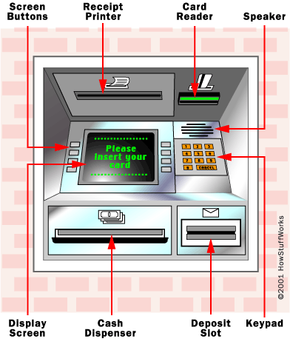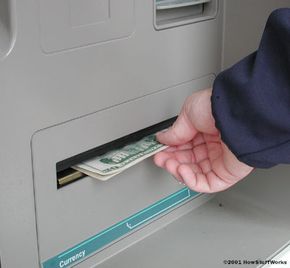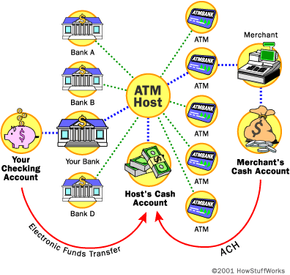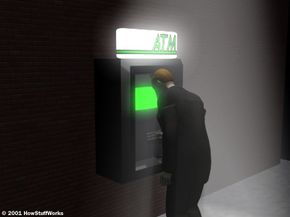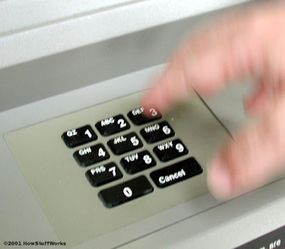As an alternative to writing checks and using a credit card, most major banks have teamed up with major credit-card companies to issue check cards.
Check cards are different from straight ATM cards in a couple of ways. First, check cards are also known as debit cards because of how they work -- instead of getting credit for your purchase and receiving a monthly bill, like you do with a credit card, a check/debit card deducts money from your checking or savings account.
Also, while you can only use your ATM card at the ATM machine (and some grocery stores), you can use a check card at most retailers that accept credit cards, such as:
- Grocery stores
- Gas stations
- Discount superstores
- Book stores
- Ticket counters (concert tickets, airline tickets, etc.)
- Pharmacies
- Hotels
- E-tailers
- Restaurants
There are exceptions. Some hotels and rental car services only accept credit cards because it's easier, cheaper, and less of a risk to them than check cards. Those that do accept check cards often put a certain amount of money in your bank account "on hold" (unavailable to you) -- usually the cost of the room or rental including taxes and other fees, plus a percentage of the total or a fee to cover possible damages. When you check out of the hotel or turn in your rental car, the difference between the "hold" amount and what you're actually billed is released back into your account. This is something to consider when using your debit card to reserve a hotel room or rent a car.
You can use your check card as either a credit card or a debit card -- either way, it comes out of your account. The only difference is that if you tell the clerk "credit card," you sign a slip, and if you tell the clerk "debit card," you enter your PIN number instead of signing. Some banks charge you a fee if you use your check card as a debit card (if it costs them more to process those transactions), but not if you use it as a credit card.
It's easy to tell the difference between a plain ATM card and a check card: A check card has your name, "credit" account number, the credit company's logo, the bank's logo and "Check Card" printed across the front of it; an ATM card has only your name, account number and bank's logo on the front of it. Both cards have strips on the back for the authorized cardholder to sign on. A check card company, such as Visa, has agreements with banks to issue what looks like a Visa credit card. A Visa check card can be used at any retailer that accepts Visa credit cards and at ATMs worldwide.
